By Bob Hicks
Mr. Scatter has a theory: William Shakespeare wrote the plays of William Shakespeare. Not that it matters all that much — the play, not the playwright, really is the thing — but there you are.
The subject comes up now for a couple of reasons.
![Title page of the First Folio, by William Shakespeare, with copper engraving of the author by Martin Droeshout. Image courtesy of the Elizabeth Club and the Beinecke Rare Book & Manuscript Library, Yale University. [1] Date 1623(1623) Source Beinecke Rare Book & Manuscript Library, Yale University [2] Author William Shakespeare; copper engraving of Shakespeare by Martin Droeshout Title page of the First Folio, by William Shakespeare, with copper engraving of the author by Martin Droeshout. Image courtesy of the Elizabeth Club and the Beinecke Rare Book & Manuscript Library, Yale University. [1] Date 1623(1623) Source Beinecke Rare Book & Manuscript Library, Yale University [2] Author William Shakespeare; copper engraving of Shakespeare by Martin Droeshout](http://www.artscatter.com/wp-content/uploads/2011/05/title_page_william_shakespeares_first_folio_1623-189x300.jpg) First, Mr. Scatter has been talking of late with the talented actor Michael Mendelson, who is deep in the process of preparing for the first production of his new company, the Portland Shakespeare Project. We’ll have more on that fascinating summer’s tale very soon.
First, Mr. Scatter has been talking of late with the talented actor Michael Mendelson, who is deep in the process of preparing for the first production of his new company, the Portland Shakespeare Project. We’ll have more on that fascinating summer’s tale very soon.
Second, Mr. Shakespeare/Shakspere/Shakspur/Shake-speare/Shagspere recently celebrated (or rather, was celebrated on the occasion of) his four hundred forty-seventh birthday, a party crashed by a small yet growing chorus of naysayers who claim he was nothing but a front man for the real author of the poems and plays.
Although Mr. Scatter does not believe he falls into the category of Shakespeare idolizer, he does believe that Father Okham’s principle should be applied here. The simplest answer seems to be that the man whose name is on the title page actually is the author. The burden of proof that some other unknown person, for reasons of intricate subterfuge, instead hired Shagspur as a screen must fall on those making the claim, and despite its academic fashionability it’s an exceedingly difficult proposition to accept. Mr. Scatter has adopted the Theory of Simple Authorship not just because several pretenders to the throne, if they were actually writing some of the plays, were doing so under the misfortunate handicap of being dead, or because a small-town grammar school education in the late 1500s was a tad more rigorous than today (did you take Latin, even when you were in college?), or because of internal consistencies or inconsistencies in the scripts (it’s true, the plays have a sometimes tenuous grasp on the finer points of geography), or because the playwright did or didn’t know or should or shouldn’t have known a rat’s behind about the intrigues of court life, social-climbing little commoner that he was.
No, Mr. Scatter has concluded that Wm Shkspr wrote Wm Shkspr because Shakespeare was an actor. The plays scream out this simple fact. No minor-league lord of the realm, let alone major-league lady (some anti-Stratfordians have posited that Good Queen Bess herself took the “Shakespearean” pen in hand) could have understood the inner workings of the theater so completely unless he or she at some point had run away and joined the Elizabethan equivalent of the circus, and with apologies to the champions of that powdered sophisticate Edward de Vere, evidence is less than scant of that.
Mr. Scatter concedes that proletarian politics play into his determination. If Wm Shagspere was a commoner, so is Mr. Scatter, and at least an ounce of class solidarity goes into his pound of persuasion. Mr. Scatter bristles at the notion that a commoner could not possibly have created the artistic astonishment that is the Shakspeherian canon: He believes that genius strikes where genius strikes, and like a cold bug, it will strike where it wants.
Of course, Mr. Scatter isn’t dogmatic on the subject, and he doesn’t hold a grudge. He believes the anti-Stratfordians are good people at heart (goodness, he even knows a few) and thinks they should feel free to wander happily in their conspiratorial woods.
Pursued by a bear.
*
Title page of the First Folio, 1623, by William Shakespeare, with copper engraving of the author by Martin Droeshout. Image courtesy of the Elizabeth Club and the Beinecke Rare Book & Manuscript Library, Yale University. Wikimedia Commons.
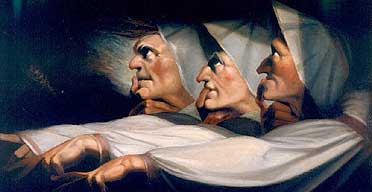
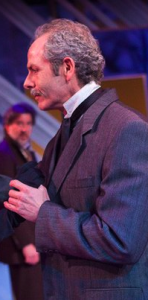 After all these years in Portland as one of the city’s best and busiest actors, Mendelson is still an industrial Midwest big city boy in certain inalienable ways, including his appetite for honest-to-god deli food, which you can’t much get around here except at oases like Kornblatt’s and
After all these years in Portland as one of the city’s best and busiest actors, Mendelson is still an industrial Midwest big city boy in certain inalienable ways, including his appetite for honest-to-god deli food, which you can’t much get around here except at oases like Kornblatt’s and ![Title page of the First Folio, by William Shakespeare, with copper engraving of the author by Martin Droeshout. Image courtesy of the Elizabeth Club and the Beinecke Rare Book & Manuscript Library, Yale University. [1] Date 1623(1623) Source Beinecke Rare Book & Manuscript Library, Yale University [2] Author William Shakespeare; copper engraving of Shakespeare by Martin Droeshout Title page of the First Folio, by William Shakespeare, with copper engraving of the author by Martin Droeshout. Image courtesy of the Elizabeth Club and the Beinecke Rare Book & Manuscript Library, Yale University. [1] Date 1623(1623) Source Beinecke Rare Book & Manuscript Library, Yale University [2] Author William Shakespeare; copper engraving of Shakespeare by Martin Droeshout](http://www.artscatter.com/wp-content/uploads/2011/05/title_page_william_shakespeares_first_folio_1623-189x300.jpg) First, Mr. Scatter has been talking of late with the talented actor Michael Mendelson, who is deep in the process of preparing for the first production of his new company, the
First, Mr. Scatter has been talking of late with the talented actor Michael Mendelson, who is deep in the process of preparing for the first production of his new company, the  Portland Taiko. Rich Iwasaki/2009
Portland Taiko. Rich Iwasaki/2009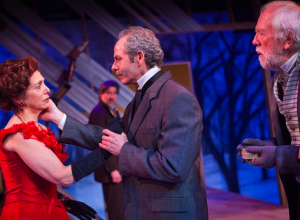 There isn’t much story to The Cherry Orchard, but there are themes, counter-themes, motifs. It’s chamber music, and the way we hear it can be startlingly different from production to production, depending not just on our own life experiences (interpreting Chekhov relies to an extreme on what the audience brings to it) but also on the emphases of interpretation on the stage: Do we concentrate on the cello tonight, or the bassoon? In truth, I suspect that even more so than ordinarily, every member of the audience sees a different play when watching Chekhov.
There isn’t much story to The Cherry Orchard, but there are themes, counter-themes, motifs. It’s chamber music, and the way we hear it can be startlingly different from production to production, depending not just on our own life experiences (interpreting Chekhov relies to an extreme on what the audience brings to it) but also on the emphases of interpretation on the stage: Do we concentrate on the cello tonight, or the bassoon? In truth, I suspect that even more so than ordinarily, every member of the audience sees a different play when watching Chekhov.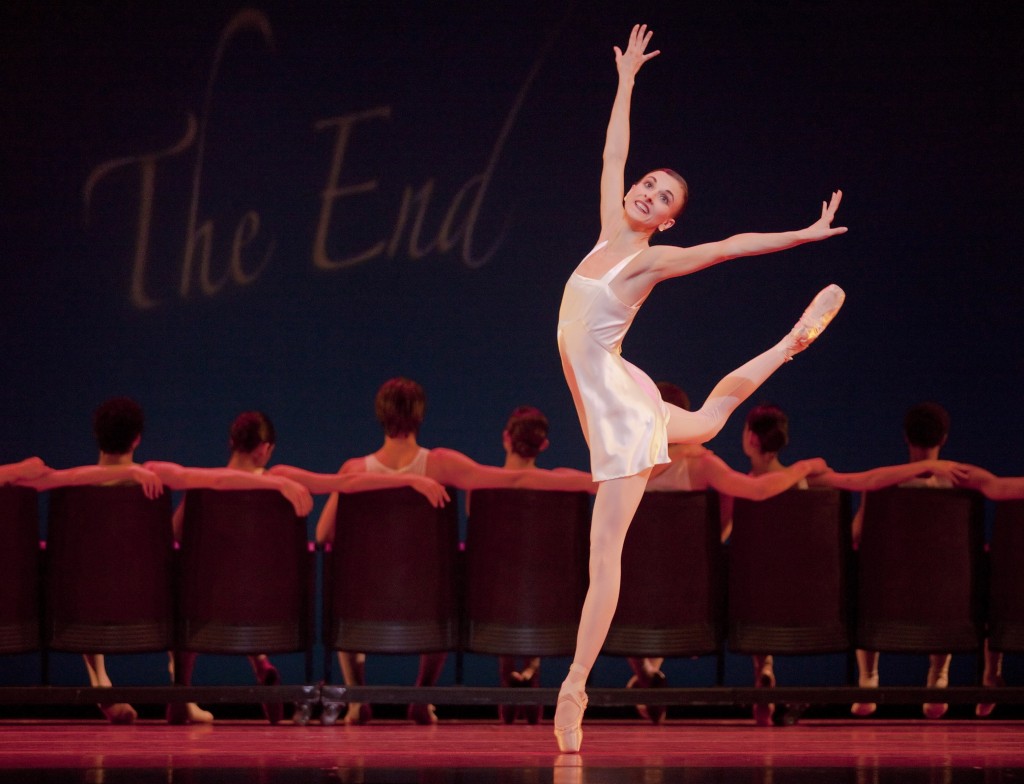 Anne Mueller in Eyes on You. Photo: Blaine Truitt Covert
Anne Mueller in Eyes on You. Photo: Blaine Truitt Covert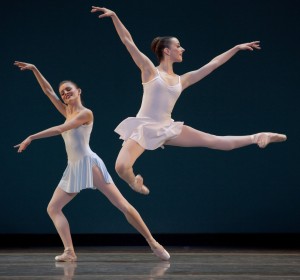 When
When 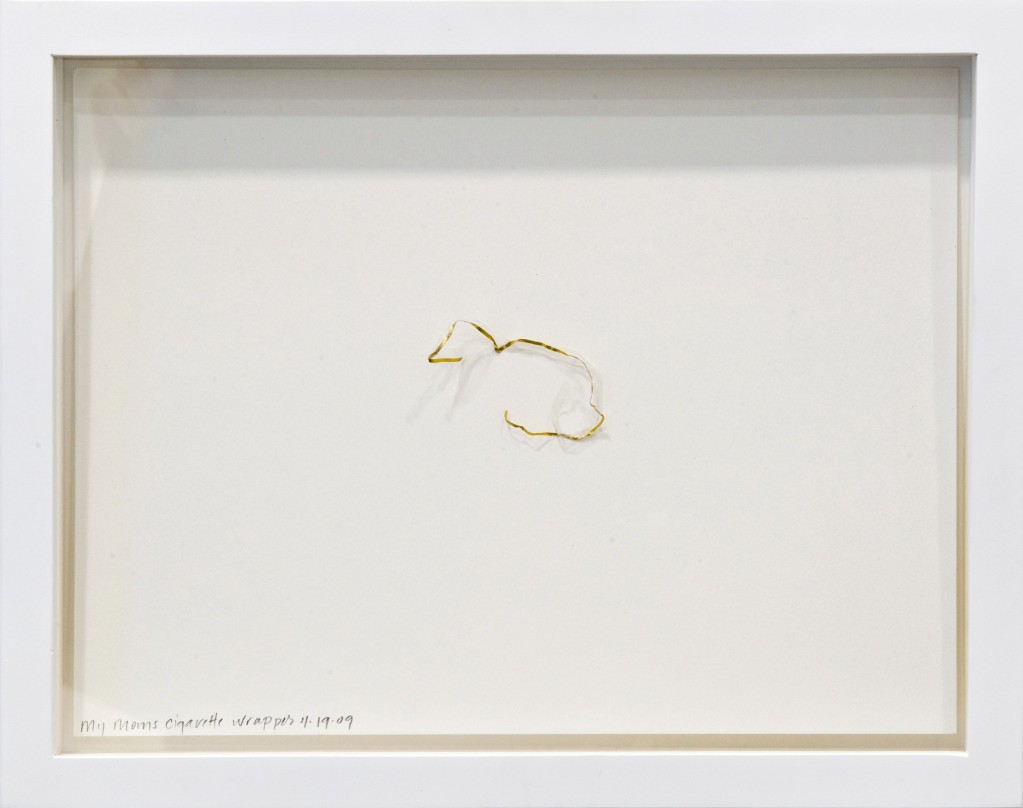 “My Mom’s Cigarette Wrapper,” 2009
“My Mom’s Cigarette Wrapper,” 2009 It was
It was 

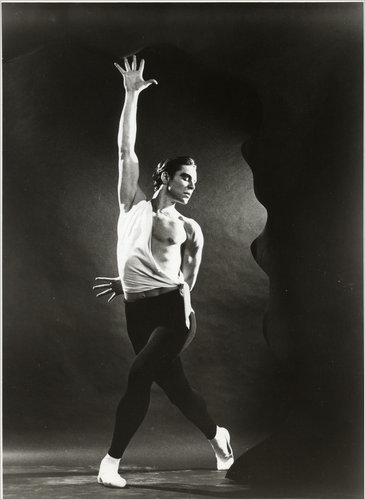 Few dancers are as capable of eloquence with words as they are with their bodies, but there are exceptions. Jacques d’Amboise, one of this country’s first homegrown great male ballet dancers, is one of them, and he’ll be in town to talk about his new book,
Few dancers are as capable of eloquence with words as they are with their bodies, but there are exceptions. Jacques d’Amboise, one of this country’s first homegrown great male ballet dancers, is one of them, and he’ll be in town to talk about his new book, 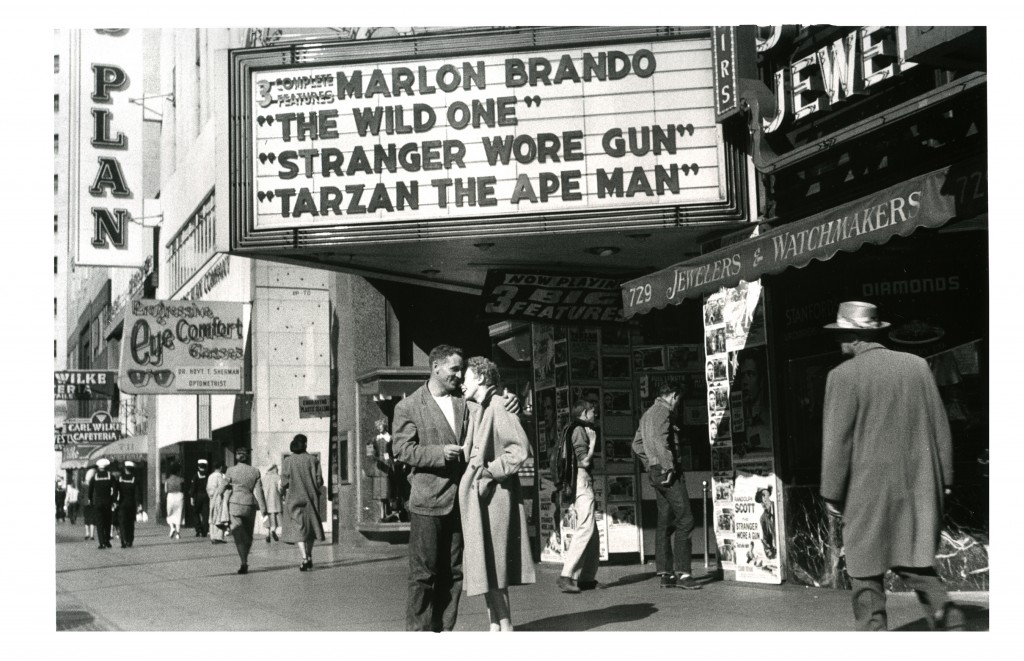 Allen Ginsberg/Elizabeth Leach Gallery
Allen Ginsberg/Elizabeth Leach Gallery